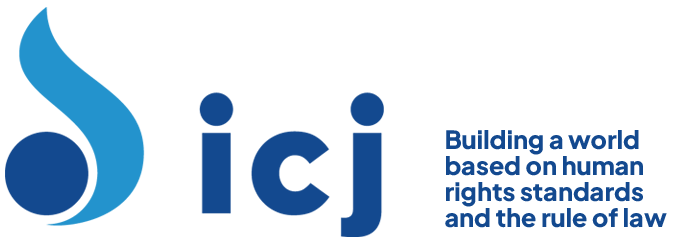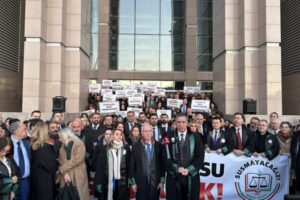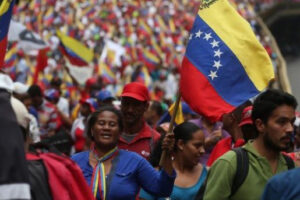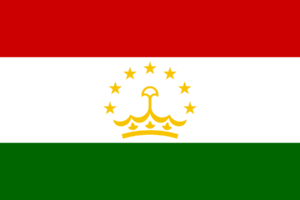Procedural Posture
Two separate constitutional challenges to the common law and statutory definitions of marriage in South Africa were consolidated. In the first case (a complaint that South African common law unconstitutionally excluded same-sex marriage), the South African government appealed lower court decisions that had found in favour of Marié Adriaana Fourie and Cecelia Johanna Bonthuys, a lesbian couple. Fourie and Bonthuys had cross-appealed the remedy of the lower court. In the second case, the Lesbian and Gay Equality Project challenged the statutory definition in the Marriage Act and were granted direct access to the Constitutional Court.
Issue
Whether the common law and statutory definitions of marriage were unconstitutional.
Domestic Law
Constitution of South Africa, Section 9 (equality and non-discrimination), Section 10 (human dignity), and Section 15(3)(a) (freedom of religion, belief and opinion).
Marriage Act 1961, Section 30(1).
Du Toit v. Minister of Welfare and Population Development and Others, Constitutional Court of South Africa, 2003 (finding the lack of provision for joint adoption by same-sex couple to be unconstitutional).
Satchwell v. President of the Republic of South Africa and Another, Constitutional Court of South Africa, 2002 (extending spousal pension benefits to same-sex partner of judge).
Mashia Ebrahim v. Mahomed Essop, Transvaal Supreme Court, Transvaal Colony, 1905 (defining common law marriage in South Africa as “a union of one man with one woman, to the exclusion, while it lasts, of all others”).
National Coalition for Gay and Lesbian Equality v. Minister of Home Affairs, Constitutional Court of South Africa, 1999 (holding that rapid changes in the makeup of South African families preclude a specific constitutional definition of marriage).
National Coalition for Gay and Lesbian Equality v. Minister of Justice, Constitutional Court of South Africa, 1998 (finding unconstitutional statutory and common law offences of sodomy).
International Law
Universal Declaration of Human Rights, Article 16 (right to marry).
Joslin v. New Zealand, United Nations Human Rights Committee, 2002 (holding that same-sex marriage bans were not a violation of Article 23 (protection of the family, the right to marriage) of the ICCPR).
Reasoning of the Court
The Court considered both cases together. Fourie and Bonthuys argued that the common law definition of marriage (“a union of one man with one woman”) violated the constitutional principles of equal protection and non-discrimination. The Lesbian and Gay Equality Project argued that altering the common law definition was an insufficient remedy because the Marriage Act required a marriage officiator to ask the parties to take each other as “your lawful wife (or husband)”. The Marriage Act, therefore, would also need to be amended.
The petitioners pointed to the Constitution’s equal protection clause, which read: “[E]veryone is equal before the law and has the right to equal protection and benefit of the law”. They argued that their exclusion from marriage violated equal protection. Similarly, they argued that their exclusion from marriage violated the discrimination clause, which prohibited “… discrimination directly or indirectly against anyone on one or more grounds, including … sexual orientation …”.
The State argued that the Constitution did not protect the right to marry and had no effect on the validity of same-sex marriage prohibitions. The Government recognised that there was discrimination against same-sex couples, but argued that marriage, as a symbolic title, should be limited to opposite-sex couples. It suggested granting same-sex couples partnership recognition under a name other than “marriage”.
The Government gave four reasons for defining marriage as only between a man and woman. Procreation was advanced as the first reason. The Government contended that procreation was the defining characteristic of marriage and that, because same-sex unions were not able to reproduce sexually, they could not meet the procreation requirement and should not be considered marriage. Religion was the second reason. The Government argued that expanding the common law and Marriage Act to include same-sex couples would be disrespectful to religion, and would destabilise centuries of religious traditions in ways that also would violate the Constitution’s promise of religious freedom. The third argument drew on international law. The Government noted that international law recognised only opposite-sex marriage and argued that South Africa should follow that precedent. Citing Joslin v. New Zealand, and international law, particularly the Universal Declaration of Human Rights, that defined marriage as between a man and woman, it contended that South Africa’s marriage law ought to mirror international definitions because, according to the Constitution, Section 232, “[C]ustomary international law is law in the Republic unless it is inconsistent with the Constitution or an Act of Parliament”.
Finally, the Government suggested that the Constitution’s promise of religious freedom also demanded that same-sex unions be recognised only by legislative action and only outside marriage law. Section 15 of the Constitution guaranteed freedom of religion, belief, and opinion. Section 15(3)(a) provided that the right to freedom of religion did not “prevent legislation recognizing – … (ii) systems of personal and family law under any tradition, or adhered to by persons professing a particular religion”. The Government interpreted this clause to mean that only the legislature could create a legal scheme to recognise same-sex couples; and that the clause also suggested that the Constitution envisioned that same-sex union law would exist outside marriage law.
Since all the parties agreed that same-sex couples were denied equal protection and were discriminated against, the Court focused on whether the creation of a union analogous to marriage but not called marriage would violate the Constitution.
First, the Court refuted the Government’s position that the Constitution did not protect the right to marry. Although the Constitution made no express mention of marriage, in the Court’s view this silence reflected the reticence of the makers of the Constitution to put the right to marry in strict constitutional terms. The rationale for this silence was that the constitutional values of human dignity, equality, and freedom encompassed the right of any two people to marry, regardless of their sex, gender, or sexual orientation. Furthermore, the case of National Coalition for Gay and Lesbian Equality v. Minister of Home Affairs had explained that rapid changes in the makeup of South African families precluded a specific constitutional definition of marriage.
The Court next reviewed the line of LGBT cases in South Africa. It found that, despite the Constitution’s express protection against discrimination based on sexual orientation, discrimination persisted, especially in relation to marriage. The Court stated that: “… [T]he impact of the legal void in which same-sex couples are compelled to live is real, intense and extensive. To appreciate this it is necessary to look precisely at what it is that the law offers to heterosexual couples, and, conversely, at what it denies to same-sex couples.”
The Court outlined both the importance of marriage as a symbolic and legal title and also the inadequacy of any alternative title. According to the Court, marriage conferred upon the involved parties certain legal rights and obligations including the reciprocal duty of support; joint tenancy and ownership of property; automatic guardianship of children born or adopted into the family; and divorce rights and protections. There were also legal consequences for married couples in the laws of insolvency, evidence, and delict. The State’s marriage requirements (registration, paperwork, ceremony) reinforced the importance of marriage as a social and legal concept.
According to the Court, withholding marriage rights from same-sex couples represented
a harsh if oblique statement by the law that same-sex couples are outsiders, and that their need for affirmation and protection of their intimate relations as human beings is somehow less than that of heterosexual couples. It reinforces the wounding notion that they are to be treated as biological oddities, as failed or lapsed human beings who do not fit into normal society, and, as such, do not qualify for the full moral concern and respect that our Constitution seeks to secure for everyone. It signifies that their capacity for love, commitment and accepting responsibility is by definition less worthy of regard than that of heterosexual couples.
The possibility that many same-sex couple might reject marriage was not an issue. The Court stated: “[I]f heterosexual couples have the option of deciding whether to marry or not, so should same-sex couples have the choice as whether to seek to achieve a status and a set of entitlements on a par with those enjoyed by heterosexual couples”.
In addition to violating the equal protection and anti-discrimination provisions, the exclusion of same-sex couples from marriage also violated Section 10 of the Constitution, which stated: “[E]veryone has inherent dignity and the right to have their dignity respected and protected”.
The Court summarily dismissed each of the government’s reasons to limit marriage to opposite-sex couples. It rejected the procreation argument because legal and constitutional perspectives simply did not recognise that procreation was the essential feature of marriage. The procreation argument was also found to be demeaning to couples that had no sexual desire or capacity to procreate, to couples that had chosen to adopt, and to couples who elected to have no children. The argument regarding respect for religion also failed. The Constitution protected religious freedom, but the Court could not use “religious doctrine as a source for interpreting the Constitution”. The Court stressed that its ruling would not compel religious officials to perform same-sex marriages if that offended their religious beliefs.
The Court believed that the government had misinterpreted international law, and distinguished the Human Rights Committee decision in Joslin regarding same-sex marriage. Joslin stated that denying a marriage licence to a same-sex couple did not violate the ICCPR. This was not the same, however, as finding that international law forbid the recognition of same-sex marriage. Even if international law expressly protected heterosexual marriage, that protection did not preclude same-sex marriage. Finally, the Court criticised the government’s interpretation of Section 15(3) of the Constitution. In contrast to the Government’s position, the Court found that Section 15(3) did not require marriage laws to be enacted only through legislative channels; nor that same-sex relationships were required to be recognised through civil unions rather than marriages.
The Court concluded that the common law definition of marriage violated the Constitution by excluding same-sex partnerships. Similarly, the marriage script provided under the Marriage Act failed to acknowledge same-sex marriages and was unconstitutional. The Court gave Parliament twelve months to cure the defect. If Parliament failed to act within that time, the words “or spouse” would be automatically read into the Marriage Act.
Minister of Home Affairs and Another v. Fourie and Another; Lesbian and Gay Equality Project and Eighteen Others v. Minister of Home Affairs and Others, Constitutional Court of South Africa (full text of judgment, PDF)




